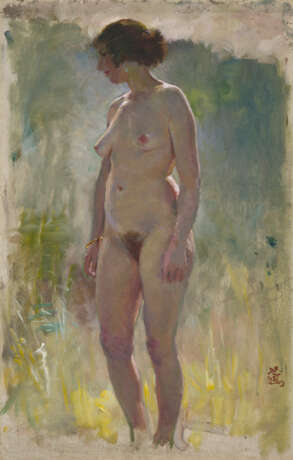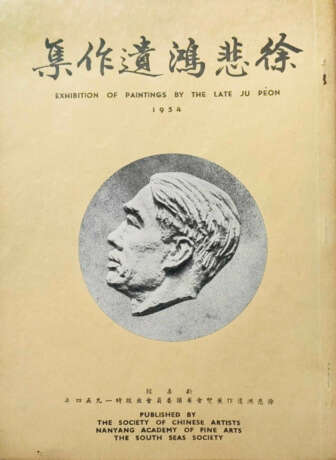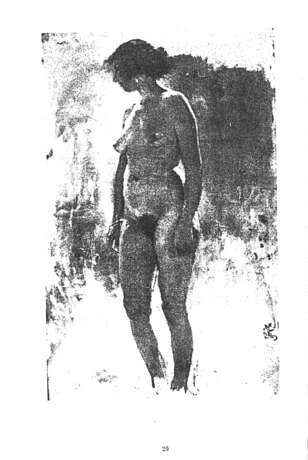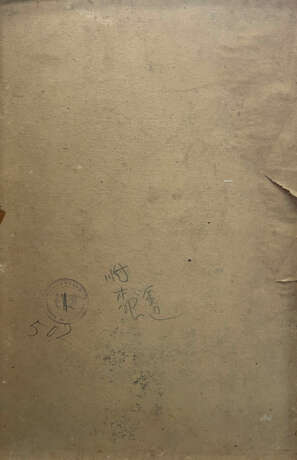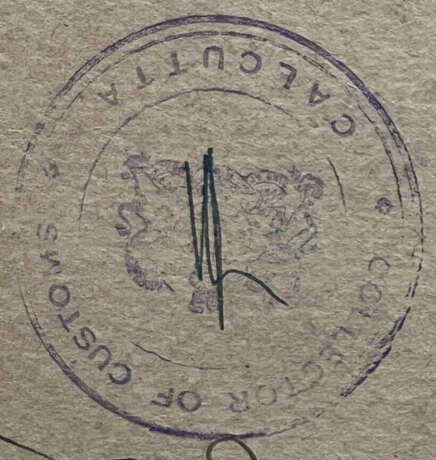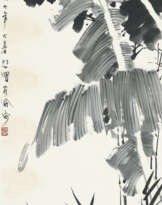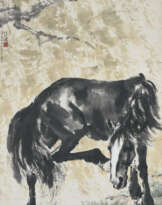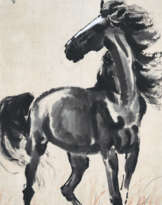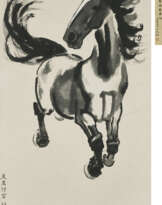ID 1222477
Lot 1166 | XU BEIHONG (1895-1953)
Valeur estimée
HKD 2 000 000 – 3 000 000
Nude
Scroll, mounted on cardboard and framed, oil on paper
52 x 33.3 cm. (20 ½ x 13 1/8 in.)
Signed by the artist
Literature
Exhibition of Paintings by the Late Ju Peon, The Society of Chinese Artists, Nanyang Academy of Fine Arts, The South Seas Society, 1954, pl.29.
Exhibited
Singapore, Victoria Memorial Hall, Exhibition of Paintings by the Late Ju Peon, 19-21 February 1954.
Further details
The foundation of Xu Beihong’s early artistic career was rooted in his training in sketching and oil painting. Upon returning from France to China, he merged Western art techniques with Chinese ink-brush painting to forge a new creative path. Xu Beihong’s oil paintings are rare in the market, as most of them were created during his youth, while a few noteworthy large-scale works from his middle years now reside in permanent collections in public museums. The present lot, titled Nude, once belonged to an important Singaporean personality and collector, Huang Man Shi (1890-1963). The painting was prominently displayed at the Exhibition of Paintings by the Late Ju Peon in 1954, an event organized by Huang Man Shi in Singapore to commemorate the passing of his dear friend Xu Beihong. Nude stands as one of the few remaining and well-preserved oil paintings with a documented history. The back of the painting is imprinted with an official stamp of the Collector of Customs, Calcutta, India (fig). This significant stamp serves as evidence that the painting entered India, most likely during Xu Beihong’s departure from Singapore to India at the end of 1939. It suggests that the artist brought along the artwork, possibly intending it for exhibition purposes. The presence of this stamp not only highlights Xu Beihong’s attachment to the painting but also adds historical significance to its provenance.
Huang Man Shi and his brother Huang Menggui (1885-1965) shared a close friendship with Xu Beihong and were active supporters and patrons of the artist. During Xu’s time in Singapore and Malaysia, the Huang brothers provided invaluable assistance and encouragement, facilitating his exhibitions and travels. Xu held a deep bond with the Huang brothers, considering them his confidants and brothers. As a result of their friendship, Huang Man Shi amassed one of Southeast Asia’s finest collections of Xu Beihong’s paintings. Following Xu Beihong’s passing, Huang Man Shi organized the Exhibition of Paintings by the Late Ju Peon in Singapore. Huang published an exhibition catalogue for the show, illustrating 28 works in black and white and one in colour. These exhibits stand as a testament to Huang’s significant contributions to the art collection scene in Southeast Asia and are highly esteemed by scholars and collectors alike. Unfortunately, these important works were only illustrated in black and white. The reappearance of the present lot seven decades after its initial exhibition is a significant event in the study of Xu Beihong’s oil paintings. It also sheds light on how Xu Beihong’s oil paintings profoundly influenced his ink paintings and the development of 20th-century Chinese art.
| Artiste: | Xu Beihong (Ju Péon, 1895 - 1953) |
|---|---|
| Style artistique: | Art moderne |
| Artiste: | Xu Beihong (Ju Péon, 1895 - 1953) |
|---|---|
| Style artistique: | Art moderne |
| Adresse de l'enchère |
CHRISTIE'S 18 Chater Road Central Hong Kong Hong Kong | ||||||||||||||
|---|---|---|---|---|---|---|---|---|---|---|---|---|---|---|---|
| Aperçu |
| ||||||||||||||
| Téléphone | +85227601766 | ||||||||||||||
| Fax | +852 2760 1767 | ||||||||||||||
| Conditions d'utilisation | Conditions d'utilisation | ||||||||||||||
| Heures d'ouverture | Heures d'ouverture
|
